A Firing Offence is the 1992 first novel of George Pelecanos, later to become (relatively) well known as a scriptwriter for The Wire. It forms the first of his three part Nick Stefanos series, a trio of novels dealing with the exploits of (apparently fairly autobiographical in terms of character) D.C. based private detective Nick Stefanos.
After finishing the Stefanos series, Pelecanos went on to write his “D.C. Quartet”, an apparently much more ambitious and accomplished series of novels. It is not, therefore, the Nick Stefanos novels for which Pelecanos is now best known, they rather represent him finding his voice as a writer. That said, while it’s fair to say A Firing Offense isn’t terribly ambitious in scope it is a solid and enjoyable work of crime fiction and having read it I do intend to read the other two in the Nick Stefanos series before moving on to the D.C. Quartet and his other works.
So, enough of what it’s not. What is it? A Firing Offense is the story of how Nick Stefanos, a bored Advertising Director for Nutty Nathan’s chain of consumer electronics stores, agrees to help find a missing employee – a 19 year old kid who Nick briefly knew and who reminded him of his own pre-corporate self. Along the way, in fine hardboiled tradition, Nick gets beaten up, beats someone up, gets in a firefight and generally asks a lot of questions of a lot of people, some of whom aren’t too happy about answering. In terms of structure, it’s very much in the Chandler/Hammett vein, Nick asks around, puts two and two together, and knows he’s on the right track because people beat him up for being on it.
Where A Firing Offense is unusual however, is in its pacing and in its portrayal of the world of work – in particular the worlds of crummy office jobs and of working a salesfloor. This is a 216 page novel, for about the first hundred of those pages Nick is pulling down his job at Nutty Nathan’s and his enquiries into the missing boy are very much a sideline, we therefore spend a great deal of time seeing what it’s like to be an advertising director. In order to free up time to look for the kid Nick goes to work out of a local branch outlet, and so we see what it’s like to work a sales floor. Almost half the book then is not so much Nick running after bad guys, as Nick drinking too much and putting in a mediocre performance at a mediocre job, while his friends and colleagues mostly do likewise.
Generally, fiction deals poorly with the world of work, I’m not sure why, perhaps few authors have experienced it and those who did hated it, after all had they loved it they wouldn’t have left to become authors. Here, however, we have overpromoted management, bored employees, people watching the clock until they can go home, the world of work in all its tedious drudgery. It’s a marvellous portrait, not least when Nick reaches the sales floor and we see the various ruses and scams the salesmen pull to ensure they get the plum customers (those looking for TVs or steroes rather than say radio alarms) and how they convince them not to buy the best TV for them but the ones with the highest commission for the salesman, then making some extra on top by selling unnecessary warranties and parts insurance.
Lloyd was still with his customer, an older woman who seemed to be edging away from him in fear. I walked over to McGinnes, who was scribbling seemingly unrelated letters and numbers onto the sales tags.
‘You remember the system?’ he asked, continuing his markings.
‘Refresh my memory.’
‘The first two letters in the row are meaningless. The next set of numbers is the commission amount, written backwards. The final letter is the spiff code [a sales bonus], if there is a spiff. A is five, B is ten, C is fifteen and so on. So, for example, the figure on this tag, XP5732B means twenty-three seventy-five commission with a ten dollar spiff. That way, you’re pitching the bait that doesn’t pay dick, you look right beside it on the next model, you see what you get if you make the step, in black and white. ‘ He stepped back to admire his handiwork.
‘Just in case one of these customers asks, so we keep our stories straight, what do we tell them the numbers mean?’
‘Inventory control codes, he said with a shrug.
Shortly before this little exchange, we spend over a page and a half watching McGinnes, the best salesman on the floor, convince an old man who’s come in to buy the advertised special offer to upgrade to a much more expensive set, in part on the basis that it has a high IS (internal spiff, the customer obviously having no idea what that means) and by such tricks as putting a lousy aerial on the set the customer had originally intended to buy – all paired with a folksy patter and an ability to come from whatever part of the US the customer hails from. It’s a marvellous sequence, fun to read and really brings to life the sleazy ambience of the Nutty Nathan’s salesfloor.
The salesmen themselves are from the Glengarry Glen Ross school of charm, swearing heavily, drinking extraordinary amounts (including during the working day) and in the case of McGinnes taking copious quantities of drugs as well. It’s a vision of a sort of retail hell, a working environment so unbearable that only by mocking their customers and deadening their senses can they make it through the day. Competition for commissions is high, with the hapless Lloyd kept on primarily to deal with the low value items nobody else wants to touch, it’s a profoundly ruthless environment and Nutty Nathans becomes a sort of microcosm of the wider city of DC, a place drowning in drink and narcotics in which nobody is really clean.
As noted above, Pelecanos spends around 100 pages of the book, almost half, on Nick’s life at work and the people he knows there. During this half, pacing is carefully gradual, with Nick starting to get deeper into his investigation, but the bulk of his activity still centring around his normal life. All this comes, however, with undertones of menace because on page 2 we are told how the story will end: “with the sudden blast and smoke of automatic weapons, and the low manic moan of those who were about to die.” That means, during this entire 100 pages of quotidiana we’re aware that by the end of the book people will have died in terrible violence, once we’re past the halfway mark we start to accelerate to that end, but it’s a measured acceleration and the drive from normal life to automatic weapon fire and painful death is always a controlled one (for the reader anyway, not so much for Nick).
Pelecanos then brings the world of work to life, and shows a real skill at pacing, where he also shows real skill is in his descriptions. Here we have Nick’s favourite lunch spot:
In the Good Times Lunch an industrial upright fan stood in the rear, blowing warm air towards the door. Malt liquor posters hung on the walls, showing busty, light-skinned women held by mustachioed black movie stars. Of the eight stools at the counter, three were occupied by graying men drinking beer from cans, and a fourth by a route salesman in a cheap suit.
And here we have Nick, getting changed to go to head office rather than the sales office:
I finished shaving and undid my tie, switching from an Italian print to a wine and olive rep. I changed my side buckle shoes to a relatively more conservative pair of black oxfords that had thin steel plates wrapped around the outside of the toes. I put on a thrift shop Harris Tweed, secured the apartment, and drove to work.
Note the relatively spare, hardboiled, prose style there.
Generally, Pelecanos brings early 1990s D.C. to life, the drugs, the racial tensions. There is a palpable sense of place through the whole novel, and given that to me a sense of place is key to writing good crime fiction, it’s an important element of the novel’s success.
Not everything, however, is quite so successful. The characters are incredibly hard drinking, Nick clearly has an alcohol problem, not yet fully developed but plainly there, that’s fine but so does almost everyone else and it’s fair to say that almost every character of note in the novel spends their time drunk, stoned or both. That may be a fair reflection of early 1990s D.C., but I wasn’t wholly persuaded. Worse though is that’s a symptom of a problem with Nick as a character. Generally, he is convincing, he is part of a Greek community that feels real (as it should, given Stefanos himself comes from such), he feels as if he has a life beyond the book, but he is also portrayed as being a bit cool and for me that didn’t wholly work.
Nick has great taste in music (I actually dug out my old Elvis Costello discs on finishing the book, apparently a common reaction to it), he can hold his own in rough clubs aimed at men ten years his junior, he is popular with women, the two times he gets in fights knowing that’s what’s about to happen he basically kicks ass, he is a fine shot too. Basically, he’s a bit badass.
Now, in part that’s all good hardboiled stuff. Sam Spade, Philip Marlowe and the Continental Op can all handle themselves in a fight, Spade and Marlowe are both handsome fellows and well dressed. Pelecanos is writing a hardboiled crime novel. It’s just that Spade, Marlowe and the Continental Op were professional PIs, Nick is an advertising director slightly past his glory days. He’s cool, but he’s cool in a slightly sad way for a character the wrong side of 30.
In fairness, that slightly pathetic quality is in part intentional. Nick’s ex-wife left him because he wasn’t accepting adult responsibilities, an element made interestingly ambiguous given that it’s clear she’s accepted them herself but that in doing so she’s lost along the way an essential part of her own character. Pelecanos gives the impression that much of Nick’s motivation in looking for the missing kid is seeking his own youth which is slipping away from him. The trouble is, those elements of ambiguity, of whether accepting adult responsibilities is simply a form of surrender, are slightly undercut by Nick later on taking down a bad guy in brutally effective fashion. It’s also undercut slightly by Nick’s success with women. Put another way, Nick’s traits that come from his status as hardboiled hero sit slightly oddly with Nick’s traits which come from him being an ageing scenester who’s sold out and isn’t sure he got anything worthwhile in return.
Still, those criticisms aside, it’s a well written and well paced crime novel. It’s not more than that, but that’s nothing to be sniffed at, it’s an enjoyable read and Nick is ultimately an interesting character to travel some of America’s backways with. As I said at the outset, I intend to read the sequel, and I look forward eventually to reading George Pelecanos’s more ambitious works, the ones he wrote when he finally felt free not to follow a hardboiled template that at times seems to work against what he’s trying here to achieve.

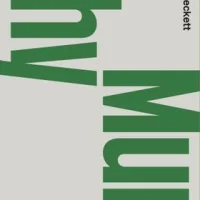

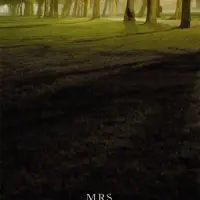


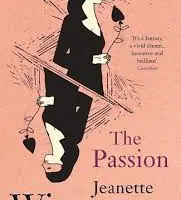

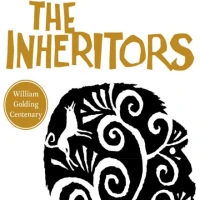
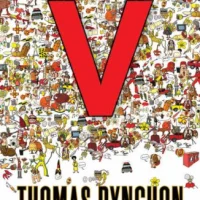



This is one genre I never seem to like. I am interested, however, in the title of the Julian Barnes story you mentioned.
Sounds like my sort of book, but I am going to Derek Raymond next.
Wanted to add: The only function my television performs is to play DVDs, but in spite of that several people have recommended the Wire.
Are you interested in film noir?
The best way to watch The Wire is on DVD, season by season. Unlike most television series, each season gets developed like a novel — the first three or four episodes are used to establish both story and characters and then it moves forward. Trying to watch it episode by episode, separated by a week, is challenging — watching three or four episodes a night is almost (but not quite) as good as reading a book. Also, each season adopts a significantly different story, although a number of the central characters remain the same. It is easy to see why good writers wrote for The Wire.
Kevin:
Duly noted. I loathe the 50 minute format with the breaks for ads. You know the ending has to appear on the horizon in x minutes.
I’ll add it to my netflix queue.
The Wire is far and away one of the best television shows ever and is the most damning indictment of the Bush years to come out of the entertainment medium to date.
Back to Pelecanos, I haven’t read the Stefanos books, but I did finish the Washington quartet and a couple of his other stand alone novels. He is always entertaining and easy to read, but some of his books succeed better than others. The emphasis on work shows up everywhere, though not so fully as it sounds like it does here and I’m glad you emphasized that. I love good depictions of work in fiction. If you read Pelecanos’ biography, you’ll see that he has worked a lot in his life. I think it’s telling that he chooses to list all his manifold jobs in his thumbnail bio that you find on the back flap of the book.
He should also be credited for expanding the Greek immigrant story, which is not as well known as some of North America’s other diaspora.
I’m not sure if The Wire is noir though. I think it’s too analytical and sociological for that.
I took a look over at Amazon and one of the reviews there said that Pelecanos seems to write for men (review written by a woman). She cited sports trivia and sports figures as an example of this (well–gratuitous and gritty sex too).
Any thoughts on that?
I’m very interested in film noir, I’ve not yet watched The Wire (it’s sitting at home, I’m currently still on The Shield) but it doesn’t sound like noir to me taking Jonathan’s point.
On the writing for men bit, I’m a bit suspicious of any claim that certain writing is for one gender or the other, that way lies men not reading Austen as too girly (which I have seen argued) or women not reading Ellroy. That said, it’s not a wholly baseless charge either, I can’t recall much sports trivia (I wouldn’t get such either, I don’t really follow any sports save occasionally ice hockey) but there certainly is some gratuitous and gritty sex.
Then again, a friend of my wife’s is an author who writes erotic novels, I’ve not reaad her stuff (as a genre, it’s never remotely tempted me) but my impression is that gritty sex in fiction is not a solely male perogative.
Candy, I did some digging, the story I was referring to is titled “The Dream” and appears in A History of the World in 101/2 Chapters.
That’s a collection with some good stories in it, as does Cross Channel actually though Cross Channel is all about Anglo-French relations so may be less interesting if you’re neither British nor French.
The best story in 101/2 is actually “The Visitors”, about an academic on a cruise ship taken hostage by terrorists who is forced by them to tell the other passengers their side of the story. That makes it sound like a thriller, it’s not, it’s about moral choices (among other things) and is very good.
I didn’t think The Wire sounded like film noir either. I was just making the Raymond link (since that’s in the back of my head as the next crime novel I will read).
Re: the male/female divide. I agree that it’s a charge that is sometimes baseless–although not of course to the person making it. I was very interested in the sports trivia comment as I certainly wouldn’t get those things either–plus they would be largely pertinent to the country in which the sport mentioned is played. British probably wouldn’t know baseball trivia and Americans wouldn’t recognize football trivia.
Raymond is definitely noir, very much so.
I don’t recall much sports trivia in this one, perhaps I just glossed over it though, certainly it wouldn’t mean anything to me.
Thanks Max. Good to know on the sports trivia as that would put me off. But…I have the Raymond book and then the Peace book (or books) and then I’ve been eying Laidlaw…
So Pelacanos is, as they say, on the back burner.
I’m a huge fan of Laidlaw, I’d put it ahead of Pelecanos personally.
I thought I’d written up a couple of the McIlvanney’s here, but I must have read them before starting the blog. Shame, exceptional stuff.
Ok, Laidlaw before Pelacanos. My impression was that I’d prefer Laidlaw/McIlvanney of the two.
It’s a shocker, isn’t it, when you think you’ve reviewed something you really loved and discover that you didn’t.
If you like film noir, considering joining us at http://www.noiroftheweek.com
On a similar note, Walker maintains a blog here http://olmansfifty.blogspot.com/ which includes I note some Hard Case Crime, he also links to a vintage hardboiled blog here http://vinpulp.blogspot.com/ though it’s not been updated since January I note.
Thanks Max. I will look them both out. I am half British but feel wholly so.
Thanks for those sites, Max. I’ll check them out.
Thanks for the pimpage, Max! It’s a good kick in the butt to get my reading back in gear. I’ll say two things:
1. That vinpulp.blogspot is fantastic, but sadly he stopped posting quite some time ago and it sounded like something serious. I hope he comes back, but if not, the archives are full of lost gems of noir fiction.
2. I can’t emphasize enough the awesomeness of Richard Stark’s Parker series. These are tough, dark books the likes of which have not been matched. I won’t quite say they are noir, being even perhaps a bit too cold and dispassionate. Start with The Hunter and don’t stop until you get to Butcher’s Moon.
Hi Walker,
Glad to hear you’re getting back into it, your On Deck pile on your site has some real gems on it, and others I don’t know but am interested in.
I’ve written up Die a Little of course, Guy’s least favourite Abbot as it happens, I’m a big Wilson Tucker fan so am looking forward to your thoughts on that (even if negative of course) – a hugely underappreciated SF talent. The Wiley and the Warren Hughes both sound interesting too, what are those ones?
I’m having the hardest time finding Wild Talent. It will fall into my hands one of these days.
I need to take A High Wind in Jamaica off my on-deck shelf as I have already read it. The review is pretty brief:
http://olmansfifty.blogspot.com/2005/12/56-high-wind-in-jamaica-by-richard.html
The Wiley book is also incredibly elusive. The source and reasons behind the recommendation are lost in time (and my bad memory). I’ve looked in used bookstores across North America for it and have yet to find it.
Pingback: A recent reading miscellany (mostly SF) | Pechorin's Journal